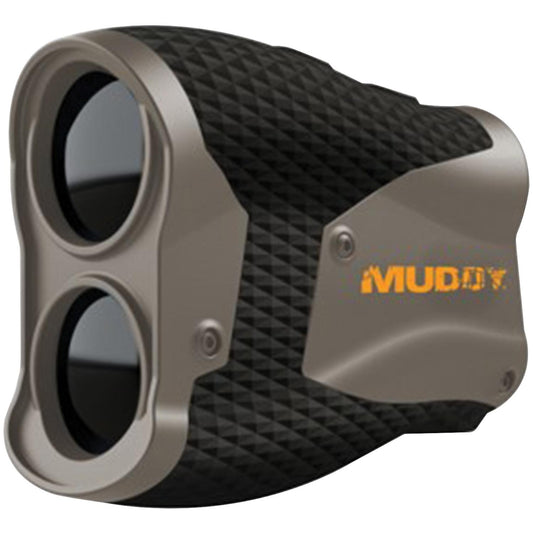

Muddy MUD-LR450 Laser Range Finder provides precise distance measurements up to 450 yards, which is essential for hunting and shooting sports. Its 7x magnification allows users to clearly identify targets from a distance, ensuring you can spot everything you need. Designed for outdoor conditions, this range finder features a rugged, water-resistant casing that withstands various weather elements, making it reliable for any adventure.
With easy-to-use controls, the Muddy MUD-LR450 allows you to switch to scan mode for continuous distance readings, helping you track moving targets effortlessly. The adjustable eye relief enhances comfort during prolonged use, while the lightweight design ensures easy portability. This range finder is not just a tool; it’s a dependable companion that elevates your outdoor experience.
Key Features:
- ENHANCED MAGNIFICATION: 7x magnification for clear target identification, ideal for various outdoor activities.
- 450-YARD RANGE: Accurately measure distances up to 450 yards, suitable for both hunters and recreational shooters.
- SCAN MODE: Continuously measure distances in scan mode for efficient tracking of moving targets.
- WATER-RESISTANT: IPX7 water resistance ensures reliable performance in wet conditions.
- RUGGED DESIGN: Durable rubberized casing for a secure grip and protection against the elements.
- ADJUSTABLE EYE RELIEF: Customize your viewing experience for maximum comfort during extended use.
- BATTERY INDICATOR: Monitor battery life to ensure you’re always ready for action.
- LIGHTWEIGHT & COMPACT: Easily portable design fits in pockets or packs for convenient use.
Technical Specifications Table
| Specification | Details |
|---|---|
| Magnification | 7x |
| Range | 450 yards |
| Dimensions | 4.3" x 1.6" x 2.8" |
| Weight | 200 grams |
| Material | Durable rubberized casing |
| Water Resistance | IPX7 |
What’s in the Box?
- Muddy MUD-LR450 Laser Range Finder
- Lens covers
- Padded carrying case
- Neck strap
- User manual
Customer Reviews
"Incredible clarity and ease of use! The Muddy MUD-LR450 has made my hunting trips far more successful." – John D.
"I love the scan mode feature! Makes tracking targets a breeze during my tactical training sessions." – Lisa M.
"This range finder is a game changer. It’s lightweight and fits perfectly in my gear." – Mark S.
FAQ
How does the Muddy MUD-LR450 compare to other range finders?
The Muddy MUD-LR450 stands out for its excellent range, durable construction, and user-friendly design. Many competitors lack features like scan mode and water resistance, making this model a more versatile choice for various weather conditions.
Is the range finder suitable for nighttime use?
While the Muddy MUD-LR450 is not specifically designed for low-light conditions, its enhanced clarity aids in identifying targets at dusk. For optimal nighttime performance, pairing it with additional optical devices may be beneficial.
What kind of maintenance does the range finder require?
To maintain your Muddy MUD-LR450 Laser Range Finder, regularly check the battery, clean the lens with a soft cloth, and store it in the padded case when not in use for optimal performance.
Similar Models
Looking for the perfect companions for your outdoor adventures? Explore our extensive range of optics, including the Muddy MUD-LR550 for a longer range and the Muddy MUD-LR300 for a more compact option. Discover our full collection for exceptional products tailored to your needs!
You May Also Like
Here’s some of our most similar products people are buying. Click to discover trending style.






